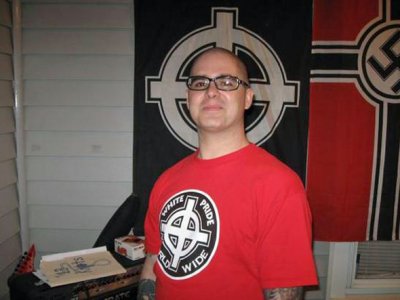Blaming Hip-Hop for Hate Rock?
David J. Leonard & C. Richard King | NewBlackMan (in Exile)
Little says more about the state of racism and the centrality of the white racial frame in the USA today than the rapidity with which pundits transformed a conversation about white power, racialized violence, and hate rock into a critique of hip-hop. Indeed, a number of discussions of the spree killing at the Sikh temple outside of Milwaukee, echoing broader political currents, reference the evils of hip-hop as both a defense and a scapegoat.
Perhaps not surprisingly, in The New Republic, John McWhorter rehearsed this well worn conversation to turn the killings into another referendum on hip-hop. “It has been fashionable,” he asserts, “to speculate on whether the White Power music he [Wade Michael Page] listened to helped stoke him into the senseless murders he committed…such speculations,” he suggests are both “incoherent” and “pointless—and they are marked, above all, by a cloying air of self-congratulation.” To “prove” his point, he invoked the tried and tested “hip-hop” comparison as if it represented mainstream rap, failing to note, of course, that he is specifically talking about a small subset of hip-hop music):
A comparison with another musical genre helps put the debate into relief. Indeed, in assessing White Power music’s influence on Page, it helps to acknowledge that rap music—savored by people of all colors, ranging in age from “youth” to middle-aged—has its own tendency to celebrate the indefensible. Some practitioners casually boast about hurting women—whether attacking a partner during intercourse (Cam’ron, “Boy, Boy”), or kicking a woman in the stomach to make her abort (Joe Budden, “Confessions II”) and, of course, all varieties of maiming and murder.
However, nasty as all of this is, and whatever one might say about its implications for the street culture that produced it, it’s all symptom rather than cause. Those who listen to rap—including myself—are not passively consuming its message, but actively seeking it as a release. Indeed, last I heard, the enlightened take on rap lyrics is that their violence must be taken not as counsel but as poetry, poses of strength from disenfranchised people—“Black Noise” as Brown’s Tricia Rose calls it. Other academics, priding themselves on their connection with the music, crown the makers of violent rap as “Prophets of the Hood” (Imani Perry, Princeton) or “Hoodlums” (William Van Deburg, University of Wisconsin), the latter meant as an arch compliment to men celebrated for speaking truth to power.
And there is more than a little bit of truth to this treatment of rap’s violent strain. It is, indeed, an attitude that functions as a response to the frustrations of everyday life. In that light, rapademics have been fond of noting that old-time “toasts” among black people had their violent strains as well. Despite the prevalent anxieties in the 1990s about the social consequences of rap music, evidence that the music causes actual violence never actually surfaced.
These arguments are as tired as they are simplistic; the failure to see any difference between rap music and hate rock is absurd on every level. Yet, they keep getting published. Yet another failure to account for white supremacy. Importantly, invoking the purported ills associated hip hop simultaneously recycles dangerous stereotypes about blacks and lets whites off the hook. Indeed, it encourages white readers to misrecognize the force of white racism and dissociate themselves from deeper structural arrangements, while essentially giving a pass to the violence, antipathy, and dehumanization at the core of white power music specifically, and white power thinking more generally. It is as if McWhorter would like to conclude: there are haters everywhere, stop picking on isolated whites who do bad things and pay attention to the ubiquitous threat of black pathology.
Continue reading @ NewBlackMan (in Exile): Blaming Hip-Hop for Hate Rock?.

